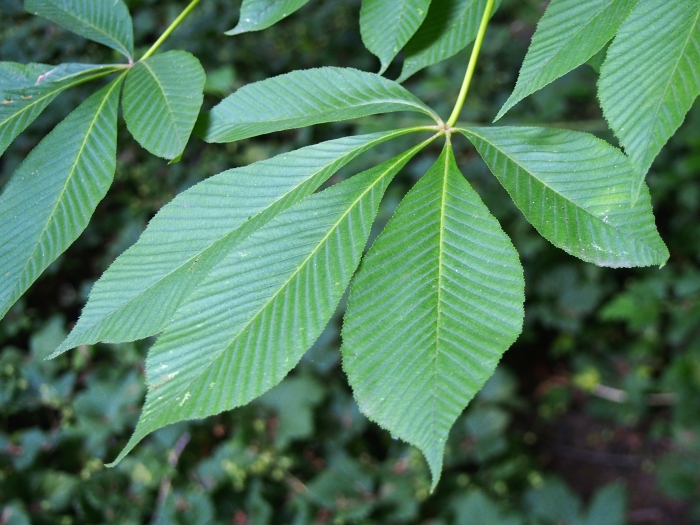Yellow Buckeye
(Aesculus flava)
Yellow Buckeye (Aesculus flava)
/
/

Agnieszka Kwiecień, Nova
CC BY-SA 4.0
Image By:
Agnieszka Kwiecień, Nova
Recorded By:
Copyright:
CC BY-SA 4.0
Copyright Notice:
Photo by: Agnieszka Kwiecień, Nova | License Type: CC BY-SA 4.0 | License URL: https://creativecommons.org/licenses/by-sa/4.0 | Uploader: Nova | Publisher: Wikimedia Commons | Title: Aesculus_flava_Kasztanowiec_żółty_2019-06-01_01.jpg | Notes: Transferred from Flickr via [[Commons:Flickr2Commons|Flickr2Commons]] |















































































Estimated Native Range
Summary
Aesculus flava, commonly known as Yellow Buckeye, is a deciduous tree native to the mesophytic forests and floodplains of the Ohio Valley and Appalachian Mountains in the Eastern United States. It thrives in a range of soil pH from acid to circumneutral. The tree can reach a height of 20m to 48m (65 ft to 154 ft) and is known for its large, palmately compound leaves. The Yellow Buckeye blooms in spring, producing showy panicles of yellow to yellow-green flowers, each 2–3 cm long, with stamens shorter than the petals. The flowers are particularly attractive to hummingbirds and bees, making it an excellent choice for pollinator gardens. The fruit is a smooth, spineless capsule containing 1-3 seeds that are toxic to humans unless properly processed.
The Yellow Buckeye is valued for its ornamental features, including its striking yellow flowers and vibrant autumn foliage, which turns shades of yellow and orange. It is commonly used in parks and large gardens for its aesthetic appeal and shade-providing canopy. The tree prefers full sun to part shade and requires ample water, making it suitable for areas with medium drainage. While it is generally easy to maintain, it can be susceptible to leaf blotch and powdery mildew. Gardeners should also be aware that the seeds and foliage are toxic if ingested.CC BY-SA 4.0
The Yellow Buckeye is valued for its ornamental features, including its striking yellow flowers and vibrant autumn foliage, which turns shades of yellow and orange. It is commonly used in parks and large gardens for its aesthetic appeal and shade-providing canopy. The tree prefers full sun to part shade and requires ample water, making it suitable for areas with medium drainage. While it is generally easy to maintain, it can be susceptible to leaf blotch and powdery mildew. Gardeners should also be aware that the seeds and foliage are toxic if ingested.CC BY-SA 4.0
Plant Description
- Plant Type: Tree
- Height: 60-75 feet
- Width: 30-40 feet
- Growth Rate: Moderate
- Flower Color: Yellow, Green
- Flowering Season: Spring
- Leaf Retention: Deciduous
Growth Requirements
- Sun: Full Sun, Part Shade
- Water: Medium
- Drainage: Medium
Common Uses
Bee Garden, Bird Garden, Butterfly Garden, Deer Resistant, Showy Flowers
Natural Habitat
Mesophytic forests and floodplains of the Ohio Valley and Appalachian Mountains
Other Names
Common Names: Common Buckeye, Sweet Buckeye
Scientific Names: , Aesculus flava, Aesculus octandra, Aesculus neglecta, Pavia flava, Aesculus lutea, Pavia lutea, Pavia discolor, Aesculus octandra var. vestita, Aesculus octandra var. virginica
GBIF Accepted Name: Aesculus flava Sol. ex Hope